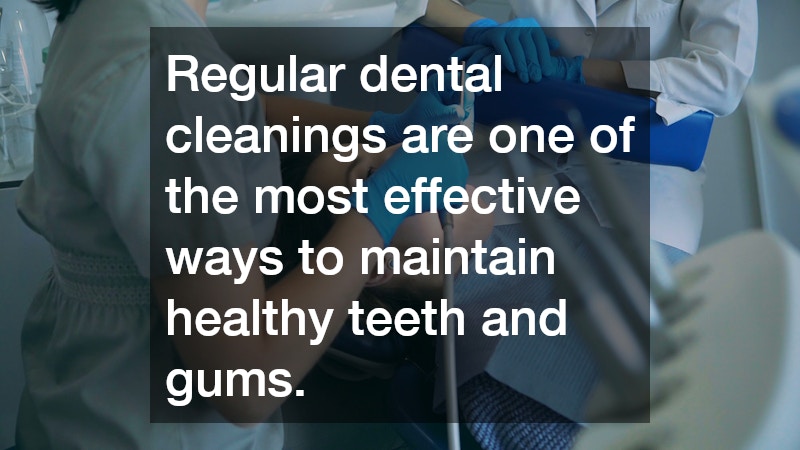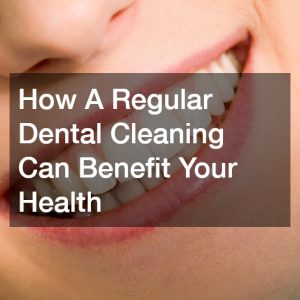Regular dental cleanings are one of the most effective ways to maintain healthy teeth and gums. These professional cleanings go beyond what daily brushing and flossing can achieve, removing stubborn plaque and tartar that contribute to decay and gum disease. Understanding the dental cleaning procedure can help reduce anxiety, promote better oral hygiene habits, and ensure long-term oral health.
What Happens During a Dental Cleaning?
Your cleaning begins with a brief examination by a dentist or dental hygienist. Using a small mirror, they inspect your teeth and gums for signs of inflammation, decay, or other concerns.
This step ensures any existing issues are identified before the cleaning starts.
Scaling Removal
The next step is scaling, where specialized instruments—either manual scalers or ultrasonic devices—are used to remove plaque and hardened tartar from the tooth surfaces and along the gumline. This process targets areas that brushing and flossing often miss, preventing gum disease and tooth decay.
Tooth Polishing
After scaling, your teeth are polished using a high-powered electric brush and gritty toothpaste. Polishing smooths the enamel, removes surface stains, and helps make it harder for new plaque to accumulate. The result is a cleaner, shinier smile that feels fresh and smooth.
Fluoride Treatment
A fluoride treatment is often applied after cleaning to strengthen tooth enamel and protect against cavities. The fluoride may come in the form of a gel, foam, or varnish and is applied using a tray, brush, or swab. It’s usually left on the teeth for a few minutes before being rinsed off, leaving a protective layer.
Post-Cleaning Examination
Once your teeth are cleaned and polished, the dentist conducts a final evaluation. They’ll check for any lingering tartar, assess the health of your gums, and discuss findings such as early signs of cavities, enamel wear, or gum issues.
How Often Should You Get a Dental Cleaning?
Most dental professionals recommend visiting the dentist for a cleaning every six months. This twice-yearly schedule helps prevent plaque buildup and allows for early detection of potential dental problems.
Personalized Cleaning Schedules
Some individuals may require more frequent cleanings based on factors like gum sensitivity, tartar buildup rate, or a history of periodontal disease. Your dentist can create a customized schedule tailored to your needs.
Indicators for More Frequent Cleanings
If you experience bleeding gums, persistent bad breath, or visible tartar, you may benefit from more frequent visits. People with diabetes, smokers, or those with weakened immune systems also require additional care.
Professional Advice
It’s important to consult your dentist to determine the best cleaning frequency for your oral health. Regular consultations help ensure that your preventive care matches your specific needs.
Impact of Skipping Cleanings
Neglecting routine cleanings can lead to plaque hardening into tartar, which brushing alone cannot remove. Over time, this can result in gum inflammation, cavities, and even tooth loss. Regular cleanings are essential for maintaining both oral and overall health.
Why Are Dental Cleanings Important?
Routine cleanings allow dentists to identify early signs of cavities, gum disease, or oral cancer. Early detection means simpler and more affordable treatments.
Preventing Gum Disease
Regular cleanings reduce the risk of gingivitis and periodontitis by eliminating bacteria-laden plaque and tartar beneath the gumline.
Maintaining Oral Health
Consistent cleanings contribute to fresher breath, stronger enamel, and healthier gums. They also help protect against conditions linked to poor oral health, such as heart disease and diabetes.
Enhancing Your Smile
By removing surface stains and polishing teeth, cleanings brighten your smile naturally—often without the need for whitening treatments.
Are Dental Cleanings Painful?
You may feel mild scraping or vibration sensations during scaling, but discomfort is usually minimal. Some areas may be more sensitive if there’s significant tartar buildup or gum inflammation.
Managing Discomfort
If you experience sensitivity, your hygienist can use numbing gel or gentler tools. Listening to music or practicing deep breathing can also help you stay relaxed.
Sensitivity Considerations
Patients with sensitive teeth or receding gums may notice slight tenderness after the cleaning. Your dentist can recommend desensitizing toothpaste to help reduce this sensation.
Dental Tools and Techniques
Modern ultrasonic scalers use vibrations and water spray to clean effectively while minimizing pressure on teeth and gums. This technology makes cleanings faster and more comfortable.
Communicating with Your Dentist
Always inform your dental team about pain or sensitivity. Open communication helps them adjust the procedure to ensure your comfort throughout the visit.
What Should You Do After a Dental Cleaning?
After your cleaning, your mouth may feel fresh but slightly sensitive. Avoid eating or drinking for about 30 minutes if fluoride was applied to allow full absorption.
Dealing with Sensitivity
Mild sensitivity is normal and usually fades within a day. Rinsing with warm salt water or using sensitivity toothpaste can provide relief.
Maintaining Oral Hygiene at Home
Brush at least twice daily, floss regularly, and use antibacterial mouthwash to prevent plaque buildup between appointments.
Scheduling Follow-Up Appointments
Set your next appointment before leaving the clinic. Regular visits ensure continuous care and reduce the likelihood of future dental problems.
Keeping Your Smile Bright and Healthy
Routine dental cleanings are essential for preventing disease, improving appearance, and preserving long-term oral health. By attending regular appointments, following your dentist’s recommendations, and maintaining daily hygiene, you can enjoy a healthier mouth and a confident smile for years to come.






